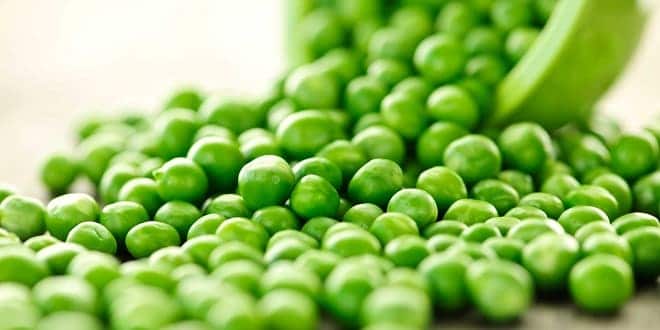Fermentasyon Teknolojisi
-

Bitkisel Fermentasyonlar ( Prof. Dr. Muhammet ARICI )
FERMENTASYON TEKNOLOJİSİ Bitkisel Fermentasyonlar Prof. Dr. MUHAMMET ARICI İSTANBUL, 2017 iÇİNDEKİLER 1. GİRİŞ Tarihçe Fermente ürünlerin günümüzdeki durumu 1.1. Fermentasyon Teknolojisinin Çalışma alanları 1.2. Fermentasyon Teknolojisinin Amaçları 1.3. İnsan Beslenmesinde Fermentasyonun Önemi 2. FERMENTASYON TEKNOLOJİSİNDE HAMMADDELER VE BİLEŞİMİ 2.1. Karbonhidratlar 2.2. Proteinler 2.3. Enzimler 2.4. Mineral Maddeler 2.5. Vitaminler 2.6. Asitler 3. FERMENTASYON MİKROORGANİZMALARI 3.1. Teknikte kullanılan mikroorganizmalardan istenilen özellikler 3.2. Mayalar 3.2.1. Mayaların ekolojisi 3.2.2. Mayaların morfolojisi 3.2.3. Mayaların çoğalması 3.2.4. Maya hücresinin bileşimi 3.2.5. Mayaların teknolojik olarak sınıflandırılması 3.2.6. Mayanın beslenmesi 3.2.7. Maya faaliyetine etki eden faktörler 3.2.8.…
-

The Benefits of Fermented Foods
The Benefits of Fermented Foods Our digestive system is composed of a network of beneficial bacteria that are responsible for assisting our digestive system to digest food, absorb nutrients, battle harmful bacteria, and eliminate toxins. When these bacteria are killed off due to food additives, antibiotic drugs, processed foods, our gut health is affected. Eating the right kind of fermented foods and avoiding foods that feed unhealthy bacteria can help nourish our healthy gut bacteria and balance the ratio of beneficial-to-bad bacteria, which will eventually reflect on our overall health…
-

Introduction to Fermentation ( Prof.Dr. Mehmet D. ÖNER )
FE-471 FOOD FERMENTATION TECHNOLOGY Prof. Dr. Mehmet D. Öner DEFINITION OF FOOD FERMENATION: Microbial(1) activities(2), usually anaerobic(3), on suitable substrate under controlled(4) or uncontrolled (5) conditions resulting(6) in the production of desirable (7) foods or beverages which are characteristically more stable(8), palatable(9) and nutritious(10) than the raw substrate. What do fermentation scientist do: 1-Fermentation industry beer, wine, dairy fermentation, pickling, oriental fermented foods 2- Industrial fermentations organic acids, antibiotics, medicine 3-New product development genetic engineering 4-Teaching, Research, Extension University, Government, Industry History of Fermentation 1 -Pre-scientific ERA scientific ERA –…
-

Fermentation Lab Reports > Yogurt ( Mustafa ERSOY )
OBJECTIVES The aim of this experiment is to examine how the yogurt is produce and to analyse the significant factors on yoghurt fermentation by preparing different types of yoghurt which are produced by various amounts of milk powders and inoculum rates. THEORY Generically known as cultured milk as they all derive from the action of bacteria on all or part of the Lactose to produce Lactic acid, carbon dioxide acetic acid, diacetyl, acetaldehyde and several other components that give the products the characteristic fresh taste an smell. The micro-rganisms used…
-

Yeast Products
Content Yeast Products Understanding Yeast Products Mixing Methods Steps in Yeast Dough Production Dough Formulas and Techniques Hard Rolls Recipe Rolled-In Doughs: Danish Pastry and Croissants Soft Rolls & French Bread Recipes White Pan Bread & Rye Bread and Rolls Recipes Focaccia Recipes Brioche Recipes Sweet Roll Dough Recipes Danish Pastry Recipes Rolling-in procedure for Danish and croissant dough Croissants Recipe Rolling-in procedure for Danish and croissant dough Fillind and Toppings for Sweet Dough Products and Danish Cheese Filling Recipe Makeup Techniques Sweet Dough Products Braided coffee cake – Spiral…
-

Green Pea Canning
GREEN PEA CANNING Introduction Canning, the process of placing foods in jars or cans and heating properly to a specified temperature, is a way to preserve many different foods. The high heat destroys microorganisms and inactivates enzymes to preserve the safety and quality of the food. Peas are legume vegetables cultivated for the fresh green seeds, tender green pods, dried seeds and foliage. Peas lose their sweetness and delicate flavor as they mature. Those of the best quality are young, fresh, tender and sweet. This underrated vegetable is rich in…
-

Sauerkraut and Kimchi
SAUERKRAUT Country: Germany Major Ingredients: Cabbage, Salt Usage: Salad, Side Dish Product Description: Fermented shredded cabbage. The product has a sour taste with a clean acid flavor. Microorganisms: L. mesenteroides, Lactobacillus brevis, Pediococcus cerevisiae and Lb. plantarum, Starter Culture: Natural Microflora, commercial starter cultures are available. Sometimes backslopping. KIMCHI Region: Korea Major Ingredients: Chinese Cabbage, Asian Radish, Red Pepper, Ginger, Garlic, Salt Usage: Salad, Side Dish Product Description: Fermented shredded cabbage. The product has a sour taste with a clean acid flavor. Microorganisms: L. mesenteroides, Lactobacillus brevis, Pediococcus cerevisiae and…
-

Besinlerin Fermentasyonu
Besinlerin fermentasyonu Fermentasyon Piruvat dönüştürülür: • Etanol • Laktik asit • Asetik asit Fermente besin ürünleri • Şarap • Bira • Süt ürünleri: Yoğurt, peynir… • Sebzeler • Et ve kümes hayvanları • Balık ve deniz ürünleri • Geleneksel ürünler • Kakao ve kahve Şarap Meyve suları Özellikle üzüm (şeker oranı yüksek) Şarap Tatlı şarap Köpüklü şarap Meyve yüzeyindeki mayalar: Kloeckera, Hanseniaspora… Saccharomyces cerevisiae, S. ellipsoideus… Doğal fermentasyon Uyarılmış fermentasyon Malolaktik fermentasyon: Alkolik fermentasyondan 2-3 hf sonra başlar, 2-4 hf sürer. Şaraptaki laktik asit bakterileri veya eklenen Leuconostoc oenos. L-malik…








